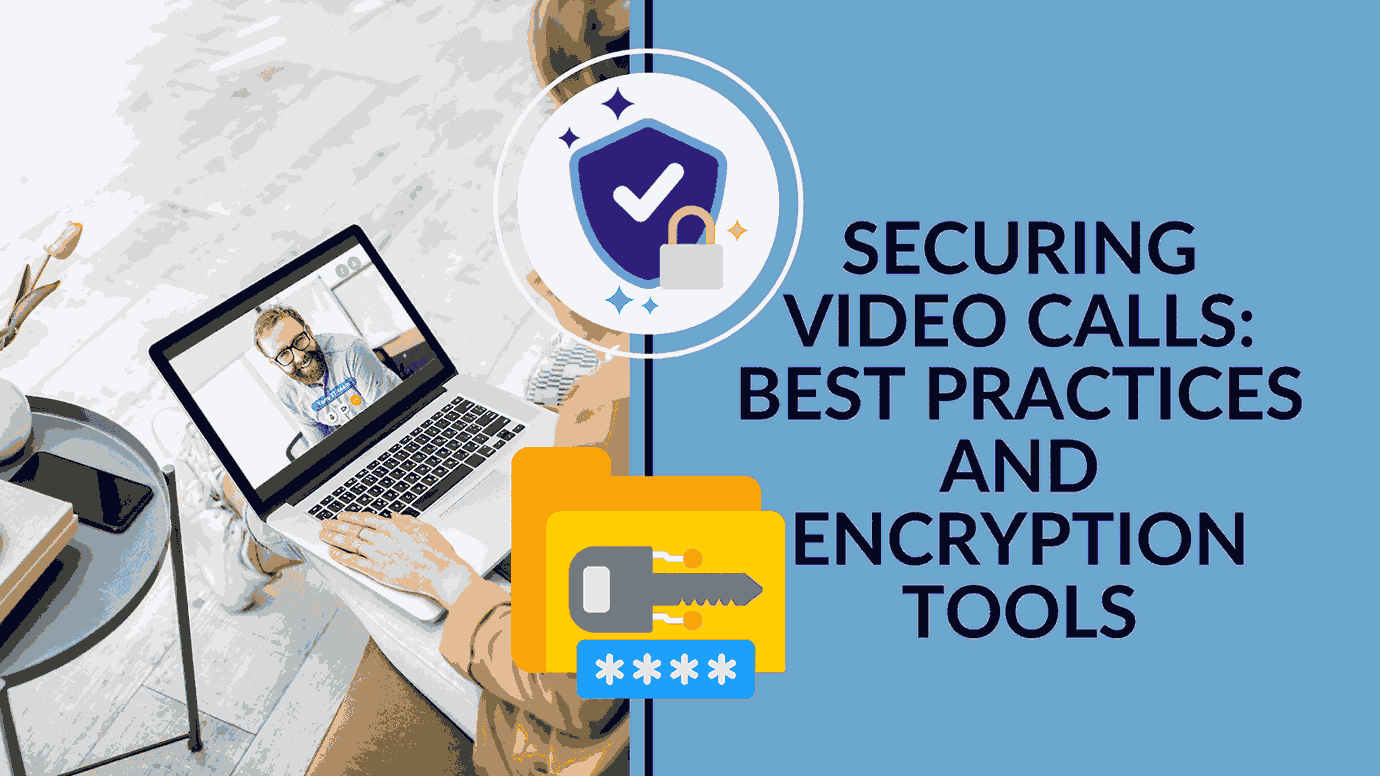Securing Video Calls: Best Practices and Encryption Tools
-


Securing Video Calls: Best Practices and Encryption Tools
In an era marked by the digitization of communication and the widespread adoption of remote work, video conferencing has become an indispensable tool for businesses worldwide. From team meetings to client presentations, video calls facilitate seamless interactions. However, in this digital landscape, securing video calls has become a top priority. Cybersecurity threats loom large, making it crucial to employ the best practices and encryption tools available to safeguard sensitive information and maintain the confidentiality of conversations.
To ensure your video conferencing experiences are secure and your data remains protected, it’s essential to follow best practices and choose a secure video conferencing provider. Let’s explore these aspects in detail.
Best Practices for Secure Video Conferencing
Unique Meeting IDs and Invitation Links
The foundation of a secure video conferencing environment starts with unique meeting IDs and invitation links for online events. Avoid using generic or predictable links, as they can be exploited by bad actors. Ensure that every meeting has a distinct identifier, making it more challenging for unauthorized individuals to gain access.
For more insights on this topic, read What Makes Video Conferencing Secure.
Waiting Room and Roll Call
Before initiating any video conference, employ a waiting room feature. Designate someone responsible for conducting a roll call to confirm the participants. This process helps eliminate unwanted guests, ensuring that only authorized individuals are granted access to the meeting. The waiting room serves as an additional layer of security, preventing uninvited attendees from infiltrating the call.
Learn more about securing video conferences from this guide on Secure Video Conferencing.
Confidential Document Sharing
Limit the sharing of confidential documents during a video call. Avoid displaying sensitive information over a public screen share. Instead, adopt secure file-sharing methods that provide end-to-end encryption for document exchange. This precautionary measure minimizes the risk of data exposure during the meeting.
You can find further tips on securing video conferencing in the guidance provided by CISA.
Restricted Screen Sharing
In large meetings or webinars, it is advisable to restrict screen sharing capabilities. Typically, only the speakers and the host should have this privilege. This limitation ensures that unauthorized participants cannot hijack the presentation or disrupt the meeting. It’s an essential security measure to maintain control over the shared content.
For comprehensive insights into enterprise video conferencing security and privacy, explore 8 Tips to Ensure Enterprise Video Conferencing Security and Privacy.
Secure Meeting Invitation Sharing
Educate your employees never to post meeting links in public forums, such as social media. Secure meeting invitation sharing is critical to prevent unauthorized access. Emphasize the importance of sending invitations directly to attendees and encourage them to be cautious about where and how they share meeting details.
For more on this topic, visit MegaMeeting.
What to Look for in the Most Secure Video Conferencing Provider
Choosing a secure video conferencing provider is fundamental to ensuring the safety of your online meetings. Here are key factors to consider:
Security Protocols
Your video conferencing provider should be transparent about the security protocols they have in place. Look for providers that implement advanced security measures such as transport layer security (TLS 1.3) and end-to-end encryption. Strong ciphers and bit key depths are essential for protecting your data. Additionally, your provider should allow you to adjust the level of encryption and security settings for your meetings.
For more information, refer to the insights provided by MegaMeeting.
Continuous Updates
Web-based video conferencing solutions are highly effective at countering emerging threats. In the cloud, providers can seamlessly update their software to address the latest vulnerabilities. Ensure your chosen provider:
- Utilizes the latest tools and technologies to enhance their software’s security.
- Employs intelligence to identify indicators of attacks (IOCs) and responds proactively.
- Runs cyber-attack simulations to prepare for worst-case scenarios.
- Adopts a zero-trust approach to cybersecurity, constantly evaluating default settings for vulnerabilities.
In today’s digital landscape, where cyber threats are ever-present, it’s crucial to partner with a video conferencing provider that takes security seriously. One such company is MegaMeeting, which prioritizes the safety of your online interactions. Their cutting-edge solutions and robust security protocols ensure that your video conferencing experiences are secure, reliable, and protected from potential threats.
In conclusion, securing video calls is essential to protect sensitive information and maintain the integrity of online meetings. By implementing best practices and collaborating with a secure video conferencing provider, you can confidently embrace the benefits of virtual communication while safeguarding your data from potential threats.
If you’re a freelancer or small team looking to streamline your SaaS stack and manage your subscriptions more efficiently, Subscribed.FYI is the perfect all-in-one solution for you. With access to comprehensive information about SaaS tools, the platform allows you to compare, evaluate, and select the best options for your specific requirements, ultimately empowering you to make informed decisions. Additionally, by unlocking Subscribed.FYI Deals, you can save big on 100+ SaaS tools, enabling you to manage all your subscriptions in one place and keep track of expenses effortlessly.
For more information and to start enjoying the perks of Subscribed.FYI, visit their official website.
Relevant Links:





